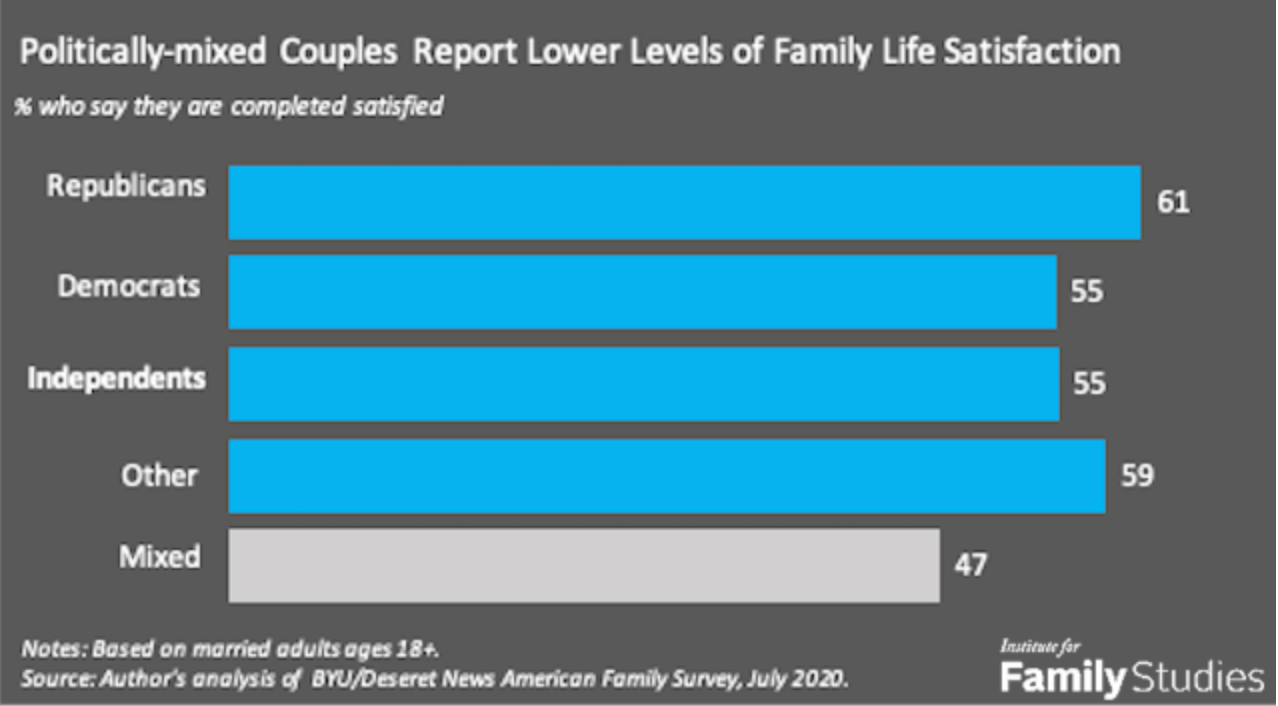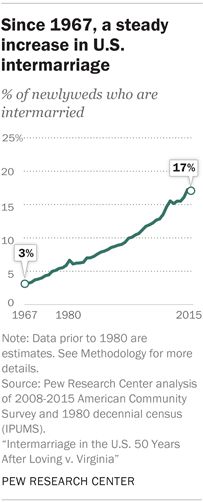How rare is marriage between a Democrat and a Republican?
Critical Analysis
Find answers to the following questions using the visual above, your big brain, the information provided and any links below:
There are three political party identifications used in the visual above: Democratic, Republican, Independent. Based on the data from the visual above, what percent of Americans marry people of the same party identification?
Based on the data from the visual above, of those who marry outside of their political party, what percent of all marriages are between a Democrat and a Republican?
Why do you think so few people marry across political party lines?
Explain whether you would marry (or even date) someone outside of your political party affiliation?
If people are less likely to marry outside of their party. What is the consequence on American politics and the likelihood that people will be exposed to different perspectives and opinions?
If your parents are married, which of the categories from the visual above, best describes your parent’s political party affiliation?
Based on the data from the visual below, which demographic groups are the most likely to marry across party lines?
in the past three years alone, the share of politically-mixed marriages in the U.S. has declined from 23% to 21%, and the share of marriages between a Democrat and a Republican dropped from 4.5% to 3.6%., indicating that the share of politically-mixed marriages has been trending down in recent years. Over time we have become less tolerant toward interpolitical marriages. When Gallup asked in 1958, “If you had a daughter of marriageable age, would you prefer she marry a Democrat or Republican, all other things being equal?” The results: 18% of Americans said they would prefer their daughter to marry a Democrat, 10% preferred a Republican, and the majority didn’t care. However, in 2016, 28% of respondents said they preferred their child to marry a Democrat and 27% a Republican, and the share who didn’t care has shrunk significantly, according to Lynn Vavreck, a political scientist at UCLA. In the past, inter-party marriages were more common than they are today. What do you think is the main reason for this change?
Interracial marriages were once banned in many American states. In the landmark 1967 case Loving v. Virginia, the Supreme Court struck down laws that forbade interracial marriage. What do you predict happened to interracial marriage after the Loving ruling?*
Do you think that couples who marry across party lines should bother voting in elections since they basically just cancel each other out? Also, does the image above look a little bit like Pac-Man?
Learning Extension
Browse the visuals and report on the decline of mixed party marriage from the Institute for Family Studies.
Action Extension
Marry someone of a different political party for homework and then report back to class. Or, if you don’t have time or inclination to marry someone tonight do the following: Interview your parents, grandparents, or friends or family members who are married and ask them to reflect upon how politics impacted their marriage. Share your research with class.






